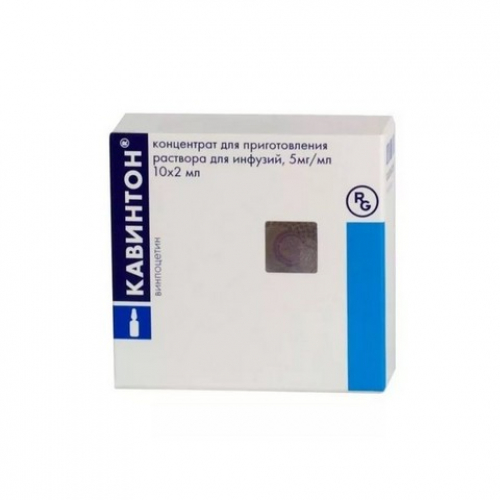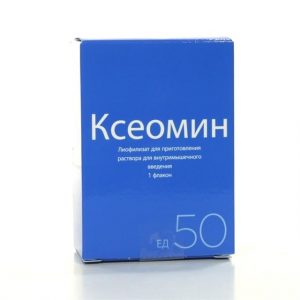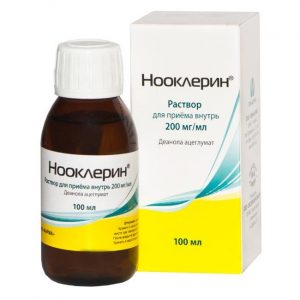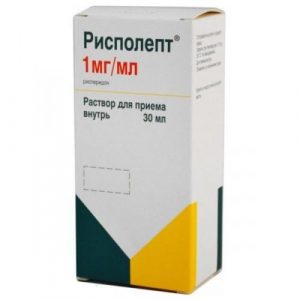Description
Latin name
CAVINTON
Release form
concentrate for solution preparation
Packing
In 1 ampoule of 2 ml (10 mg) of concentrate. In a cardboard box of 10 ampoules.
Indications
Decreased severity of neurological and mental symptoms in various forms of blood deficiency brain rotation: – Ischemic stroke.
– The recovery phase of hemorrhagic stroke.
– The consequences of a stroke.
– Transient ischemic attack.
– Vascular dementia.
– Vertebrobasilar insufficiency.
– Atherosclerosis of the cerebral vessels.
– Post-traumatic and hypertensive encephalopathy.
– Thrombosis / occlusion / central artery or retinal vein.
– Perceptual hearing loss.
– Meniere’s Disease.
– Idiopathic tinnitus.
Contraindications
– The acute phase of hemorrhagic stroke.
– Severe coronary artery disease.
– Severe arrhythmias.
– Pregnancy.
– Lactation.
– Age under 18 years (due to insufficient data).
– Known hypersensitivity to vinpocetine.
Use during pregnancy and lactation
Cavinton is contraindicated in pregnancy.
There are no data on the safety of Cavinton during lactation (breastfeeding).
Composition of
In 1 ml of concentrate for the preparation of a solution for infusion contains:
Vinpocetine 5 mg.
Excipients:
ascorbic acid,
sodium disulfite,
tartaric acid,
benzyl alcohol,
sorbitol,
d / i water.
Dosage and administration
The drug is intended for intravenous drip infusion. Enter slowly, the infusion rate should not exceed 80 drops / min).
It is forbidden to enter in / m and / in without dilution.
For the preparation of infusion, you can use saline or solutions containing dextrose (Salsol, Ringer, Rindex, Reomacrodex). Cavinton infusion solution should be used in the first 3 hours after preparation.
The usual starting daily dose is 20-25 mg in 500 ml of infusion solution. Depending on tolerance, within 2-3 days the dose can be increased to no more than 1 mg / kg / day. The average duration of treatment is 10-14 days.
Average daily dose with a body weight of 70 kg – 50 mg (in 500 ml of infusion solution).
For liver and kidney disease, dose adjustment is not required.
Drug interaction
With simultaneous use, there is no interaction with beta-blockers (chloranolol, pindolol), clopamide, glibenclamide, digoxin, acenocoumarol or hydrochlorothiazide.
In rare cases, concomitant use with alpha-methyldopa is accompanied by some increase in the hypotensive effect, with the use of such a combination, regular monitoring of blood pressure is necessary.
Despite the lack of data confirming the possibility of interaction, caution is advised when given simultaneously with central nervous anti-arrhythmic drugs.
Pharmaceutical interaction: Concentrate for solution for infusion and heparin are chemically incompatible, therefore it is forbidden to introduce them in the same infusion mixture, however, can be simultaneously treated with anticoagulants and vinpocetine. The concentrate for the preparation of a solution for infusion is incompatible with infusion solutions containing an amino acid, therefore they cannot be used for Cavinton dilution.
Overdose
Symptoms: increased side effects.
Treatment: gastric lavage, activated carbon intake, symptomatic therapy.
Storage Conditions
Store in a dark place at 15-30 ° C.
Shelf life
5 years.
Terms and conditions
prescription
dosage form
infusion solution
Possible product names
CAVINTON END. D / PRIG. R-RA D / INF. AMP. 5 MG / ML 2ML No.10
CAVINTON 0.005 / ML 2ML N10 AMP
CAVINTON 0.005 / ML 2ML N10 AMP END D / R-RA D / INF
CAVINTON 0.5% 2ML N10 AMP
Cavinton 0.5% 2m




